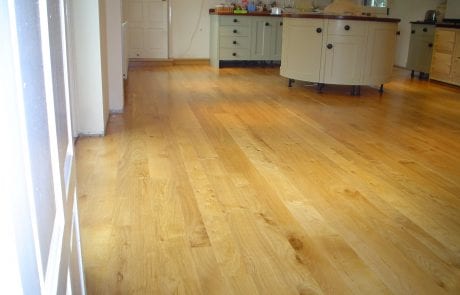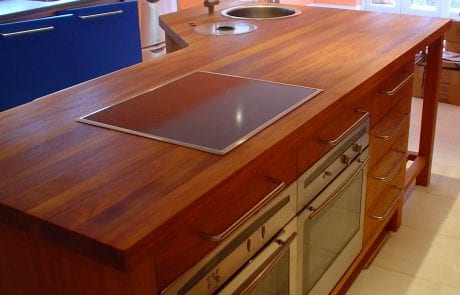We have an on-site retail shop for our calling customers. It is aimed at customers who require smaller quantities of timber. If you are a carver, DIY enthusiast in need of hardwood, or wood turner who in need turning blanks, tools or finishes, do drop us a visit. Our expert staff will be on site for any advice you may require.
As a working hardwood sawmill we are able to offer many and varied services to our customers. These include converting boards to a sawn to size cutting list, machining i.e. P.A.R. and mouldings, customer selection of the timbers that they require (subject to appointment).
We are able to offer lump sum pricing which can be worked out from your cutting list, for the material in a form that you require.
Our shop stocks a variety of different hardwoods, and a few softwoods for your requirements. To get the best out of our hardwoods, you will find that we do not stock standard sizes. You will be able to look through our racks to see if we can meet your need. But don’t despair – if what you need isn’t there, please, do ask. Our yard is large and we may well have stock elsewhere – please ask.
Turning Blanks
We have a variety of turning blanks on stock, these always move quickly and available species will vary at any one time, but may include the following:
Exotic Timbers
We stock a variety of more exotic timber, these are in smaller sizes and do sell quite quickly. They may include the following species.
Bog Oak – from East Anglia
Quercus Robur
- Sourced from the East Anglian fens
- Carbon dated to 5300 years old
- Limited supply
- Inky black to very dark brown
- Bog Oak was created when prehistoric forests were submerged under water and silt in anaerobic conditions thousands of years ago.
- Totally unique to the UK
Brazilian Tulipwood
Dalbergia frutescens
- Other names: Pinkwood, bois du rose
- Originates: Brazil
- Hard, Heavy and straight grained
- Used for inlay work and turnery
- We have very limited supply – currently this timber is difficult to source
Bubinga
Guibourtia demeussi
- Other names: African rosewood, kevasingo
- Originates from West Africa
- A quality cabinet and turnery timber. Firm, solid and stable. The grain is straight or interlocked. Fine pores may contain a reddish gum. The texture is fairly coarse but even, and surfaces can be highly lustrous.
- Light pinkish brown in colour often lightly veined in red. Resembles some of the lighter coloured rosewoods. Sapwood is usually grey to ivory.
- The name kevasingo is used by the veneer trade and applies only to rotary cut veneers.
Carretto
Aspidosperma curranii
- Orginates: Columbia and Panama
Chechen
Metopium brownii
- Other names: Black poison wood, Honduras walnut
- Origininates from Belize
- Yellowish brown maturing to walnut brown with fine texture and markings, suggesting figured walnut, but heavier.
- Hard but workable.
Mexican & Nicuraguan Cocobolo
Dalbergia retusa
We currently have two types of Cocobolo as pictured above. technically they have the same botanical name, but show slightly different appearances.
- Other Names: Grandillo (Mexico)
- Originates from the pacific regions of Central America and extending from Panama to south western Mexico.
- Sapwood is light cream to dingy white in colour.
- Heartwood, when freshly sawn, becomes a deep orange red with black striping or mottling on exposure.
- The wood has a fine texture, with a very variable grain.
- Very durable and easy to work with provided saws and cutting edges are kept sharp.
- It takes stains and polish readily, but is unsuitable for gluing.
- Used for cutlery handles, brush backs, small tool handles, turnery and small decorative items. Internal use.
Columbian Rosewood
Dalbergia tucurensis
- Other names: distinguished by country of origin
- Originates: Columbia
- Dark brown
- Dense, difficult to work, finishes to a beautiful lustre.
Black Ebony
Our stock is a mix of African Ebony – Diospyros crassiflora and Indian Ebony – Diospyros tomentosa. This has resulted from our supplier having mixed stock. The two are very similar and the difficulty in identifying them has resulted in our supplier and us putting them together under one heading.
This stock is taken from new growth logs and is subject to stringent export regulation that, along with the small log sizes, somewhat limits the range of sizes that can be offered.
Lemonwood
Calycophyllum multiflorum
- Other names: Castelo Box, Genero Lemonwood
- Originates: Central and South America
- Pale yellow to beige in colour.
- Fine grain, good to work. Alternative to European boxwood. Used for inlay work and for archery bows.
Lignum Vitae – Palo Santo wood
Bulnesia sarmienti
- Origininates from Paraguay
- Although this wood has been used for generations for the same purposes as the genuine lignum vitaes (timber from the genus guiaicum) it has become a more important choice recently because of the listing of the Guaiacum lignum vitaes on Cites appendix II.
- Genuine lignum vitae is currently only possible for import with Cites export and import documentation. In practice this means there is not a lot coming through.
- Greenish brown to brown with a tight and pronounced interlocked grain, very dense, waxy – with self lubricating qualities, hard wearing in almost all the contexts in which lignum vitae has traditionally been used.
Macassar Ebony
Diospyros spp
- Other names: ebene
- Originates from Celebes Islands
- Black, rarely showing stripe, hard and heavy with the capability of being worked to a high level of finish. Finer textured and denser than African ebony but with a limited and erratic supply.
- Very durable
- Typically used for sculpture, carving, fine turnery, piano keys and other musical instruments.
Olivewood
Olea europaea
- Other names: Olivier
- Originates: Southern Europe
- An attractive wood with tan heartwood, brown streaks, sometimes an almost green tint.
- Close grain, shallowly interlocked. Strong and hard wearing. Not the easiest to work, but does plane and turn well. Blunts tools fairly quickly
- Size is limited, so used for smaller items such as boxes, decorative turnery, handles etc.
Padauk
Pterocarpus soyauxii
- Other Names: Barwood, camwood
- Originates from West Africa.
- The sapwood is of an oatmeal colour, the heartwood varies from blood red to dark brown, with red streaks.
- The grain is straight top slightly interlocked and the texture is moderately coarse.
- Very durable, it works excellently and takes a first class finish.
- Used for furniture and cabinet making, also used for carving.
Pao Amarello
Euxylophora paraensis
- Other names: Brazilian Satinwood, Sateenwood
- Originates from Brazil
- Bright clear yellow with a lustrous and often deep ribbon figure. Useful as a Satinwood substitute.
Partridgewood
Caesalpinia paraguanensis
- Other names: Brown ebony
- Originates from Paraguay
- Dense and glassy deep coffee brown with a layered structure like wenge but much finer textured resulting in a classic ‘partridge wing’ figure on slab sawn faces.
Pink Ivory Wood
Rhamnus zeyheri (berchemia zeyheri)
- Other names: Red Ivory Wood, pau preto, umgoloti
- Originates from Mozambique, and also South Eastern Africa
- Heartwood yellowish brown with a rich golden red cast. The wood has a pinkish red striped figure.
- The wood is tough, hard and heavy. Fairly difficult to work with hand tools. The wood glues, sands and stains well, and can be brought to a highly polished finish.
- Non-durable
- Traditionally used for furniture, interior joinery, carving, inlay, chess pieces. The best logs are used for veneer.
Purpleheart
Peltogyne spp
- Other Names: Amaranth (USA), Pau Roxo, Amarante (Brazil)
- Originates from Mexico through Central America and into South America to southern Brazil.
- Heartwood is greyish-purple, later becoming violet purple to deep purple through oxidation, sharply demarcated from the creamy white sapwood.
- Texture varies from fine to medium, the grain is usually straight and seldom interlocked, but is sufficiently irregular, along with variation in lustre and colour.
- Very durable
- Used for furniture, cabinet making, tool handles and flooring.
- Turns smoothly, easy to glue, and takes finishes well. Internal & External use.
Roupala Lacewood
Roupala brasiliensis
- Other Common Names: Leopardwood, Leopard, Lacewood, Brazilian lacewood
- Originates from: Brazil, South America
- Possessing one of the most unique grain patterns of all the exotics, Lacewood is most easily recognized for its large rays. Usually it has a straight grain and is coarse textured, with a light reddish-brown colour.
- Common Uses: Turnings, musical instruments, decorative accessories, veneers, marquetry
Satine Rubane
Brosimum paraense
- Other names: Bloodwood.
- Originates: Brazil
- Strawberry red to blood red in colour, retains colour in bright sunlight unlike other brightly coloured species.
- Very hard, gives an odour not unlike coconut when worked.
Verawood
Bulnesia arborea
- Other names: Maracaibo lignum vitae, Argentine lignum vitae
- Originates: Columbia and Venezuela
- Dusty green to light brown when cut. Dense, with an almost waxy grain, makes gluing difficult. Works well.
Wenge
Millettia laurentii
- Other Names: Palissandre du Congo (Zaire)
- Originates from the Republic of Congo (formerly known as Zaire), Cameroon & Gabon, Africa.
- Heartwood is dark brown with fine close black veining.
- Very durable, good resistance to bending and to shock.
- Easy to work with but difficult to polish.
- Best suited for flooring or decorative veneer to furniture and interior decoration.
- Very good for wood turning as a high finish can be obtained. Internal use.
Zebrano
Microberlinia brazzavillensis
- Other Names: Zebrawood (UK)
- Originates from West Africa.
- Zebrano is a decorative wood, light gold in colour, with narrow streaks of dark brown to almost black.
- Used as a veneer, usually as decorative banding. The veneer is sliced and quarter cut in order to avoid buckling due to the alternating hard and soft grain.
- Finishes well on a belt sander. Internal use.
Australian Timbers
Banksia Nuts
Banksia grandis
- Originates from Western Australia, in sand on the coastal plain, and woodland and heath. Flowering period, mainly October to January.
- Fruits of either a tree or shrub. May take 10 years or more to flower from seed.
- They were discovered by, and named after, Sir Joseph Banks who travelled with Captain James Cook on his discovery of Australia in 1770.
- Used for handicraft and decorative items.
Many people have asked us what the Banksia Nut is, after some research courtesy of the Royal Botanic Gardens in Sydney, we found that Banksia Grandis – to give its full name, is a large shrub to small tree (growing up to 9 metres) with huge yellow inflorescences. In the wild, it occurs from Mount Lesueur to Cape Leeuwin in southwestern Western Australia in sand on the coastal plain, in woodland and heath. It is common in laterite in the Jarrah forest of the Darling Plateau near Perth.
WARNING – POSSIBLE HEALTH RISK
Many of these timbers may cause respiratory and irritant problems, it is advisable to use suitable breathing, eye protection and gloves when working them.


